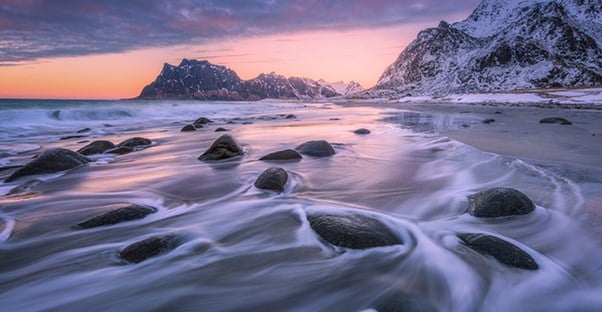Kilauea, Hawaii

Color us surprised that a beach near an active volcano might be a dangerous place to be. Impossible to believe, right? Well, the gorgeous and unusual black sand of Kilauea beaches make it an obviously popular spot, but the volcanic fumes can be dangerous to your health--especially for the young or elderly.
It goes without saying that you should probably also avoid swimming when molten lava is pouring into the ocean nearby. What really doesn’t help is that Kilauea is considered the most active volcano of the five that are in Hawaii. While it isn’t currently erupting, the most recent was in December 2020. It continued to erupt until May 2021.
New Smyrna Beach, Florida
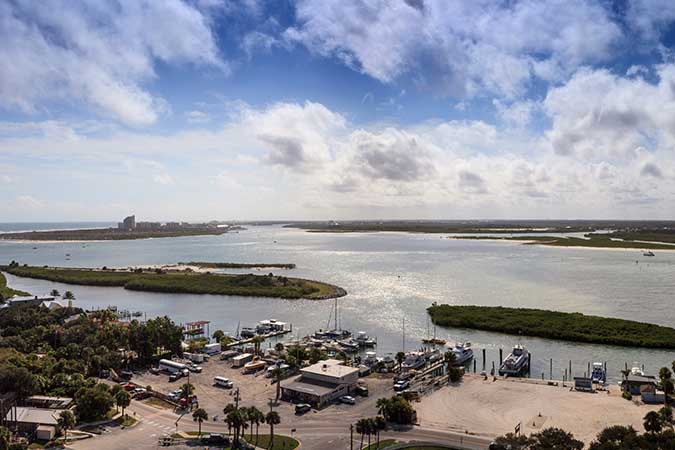
New Smyrna Beach is an all-American vacation spot with your classic, all-American shark problem. This stretch of ocean is home to large schools of fish, and we can't blame the sharks for wanting an easy meal. However, we will blame the sharks for mistaking multiple surfers for delicious snack-worthy guppies.
All in all, there have been over 244 attacks in the city’s waters since the first recorded one occurred in 1956. That doesn't sound like a lot, but a nearby county only has 13 (while another one only has four). Obviously, one beach is safer than the other. Experts believe that New Smyrna has more sharks because the tidal flow in the Ponce de Leon inlet leads to more baitfish.
Boa Viagem Beach, Brazil
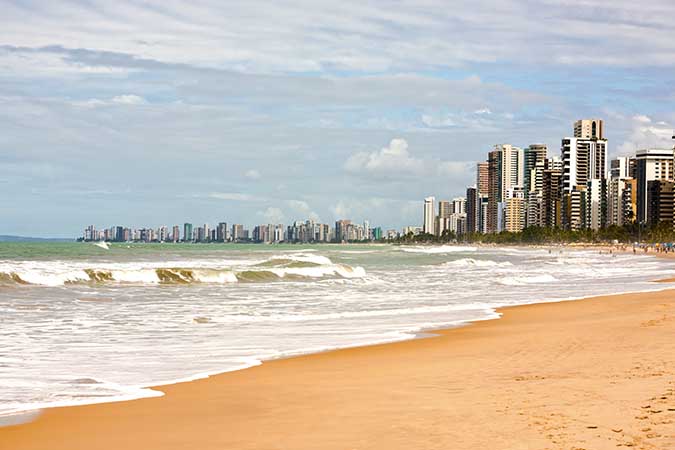
There are shark-infested waters...and there there's Boa Viagem Beach in Brazil. On the outside, this gorgeous beach looks like the perfect tropical spot to go for a nice, lovely swim in its warm waters. Be careful, though. The water hides some pretty vicious monsters underneath the water’s surface – sharks. This beach has lots and lots of sharks.
Not only are there a lot of sharks on the beach, but it’s also home to some of the most aggressive sharks in the world. The thing about shark bites is that most aren't fatal. They can hurt a lot and take limbs, but most shark attacks only lead to about a 16% death rate. Boa Viagem, however, has a death rate of 37%.
Hanakapiai Beach, Hawaii
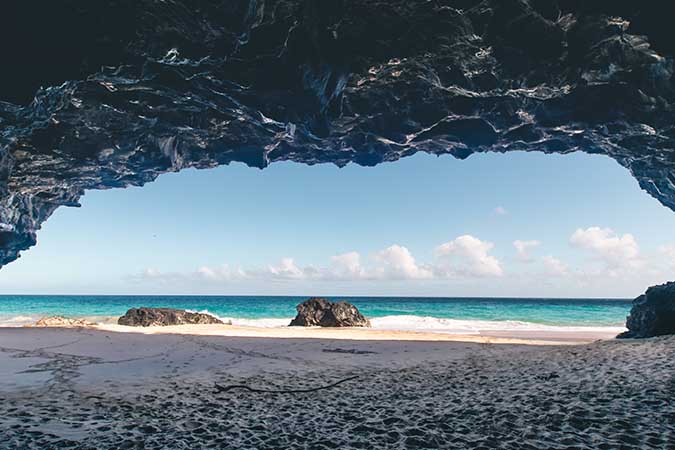
Hanakapiai Beach is so inviting because it's beautiful and close to a trail. It's only two miles from the Kalalau Trail. However, most experienced hikers will warn you to avoid Hanakapiai beach. Why? The riptides! The riptides have been associated with the deaths of at least 83 people (that officials know of).
The rough beach will drag even the most experienced swimmer away from shore where they'll be taken down. At least 15 victims haven't even been found. The reason is that the beach doesn't have a reef barrier to resist the ocean currents which hit the shore with full force. It’s just best to avoid it altogether.
Gansbaai, South Africa
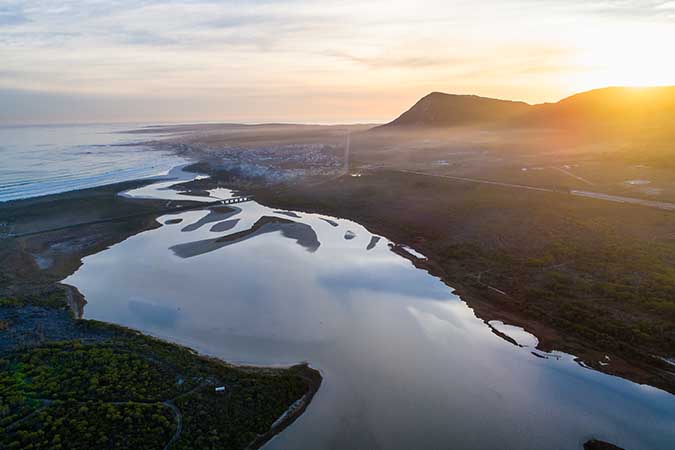
Gansbaai Beach in South Africa has a well-deserved reputation problem. It's known as the "great white shark capital of the world." That should be enough to keep anyone from swimming in its waters (or going near it at all). Because so many sharks have injured and killed swimmers, signs have been posted to avoid further victims.
That doesn't stop some people, however. Tourists find the danger even more exciting. The area is popular with divers because of the great whites, prompting people to sink in a cage that protects them from the massive predators. It’s a good way to come face-to-face with one of nature’s most terrifying beasts, but how much do you trust the cage?
Playa Zipolite, Mexico

If you visit Playa Zipolite in Mexico you're safe and sound...as long as you stay on the sands, that is. This is another spot with a powerful riptide notorious for dragging swimmers far out to sea. Experienced swimmers may tell people that if they're pulled out by a riptide, try and swim out of the current until you can head back to shore.
Well, Zipolite's currents go in a circular motion and almost completely line the beach. This makes it nearly impossible to swim back after being pulled out. There are lifeguards but they can’t do a whole lot to save someone who didn’t heed the warnings. So many people have died here that it’s now called the “beach of the dead.”
Skeleton Coast, Namibia
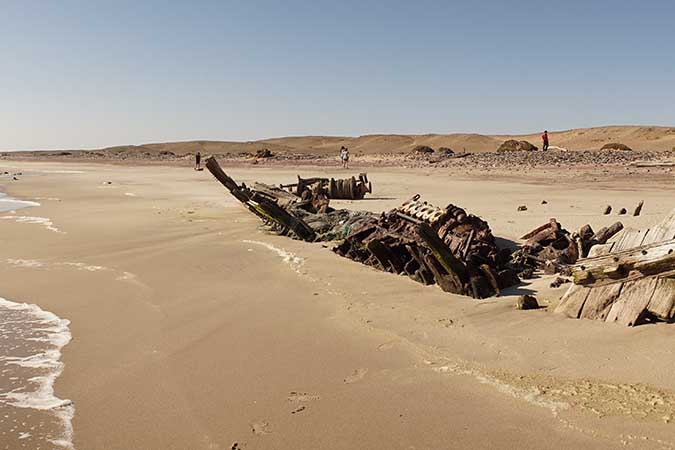
Here we have another beach that advertises its danger right in its name. What is it about people wanting to risk their lives at these beaches? Skeleton Coast in Nambia is known for a few things, and none of them are particularly inviting. Like many of the ones on this list, there are sharks – 11 species of these beasts.
The currents are also awful. It’s dangerous that not even ships can escape the pull. The skeletons of nearly 500 ships litter the shore. Finally, as if none of this was enough to keep you away, you may spot the occasional lion or hyena roaming around wanting to chow down. No biggie, right?
Virginia Beach, USA

Oh, yes! We have plenty of dangerous beaches in the United States as well. Virginia Beach is a beautiful vacation spot near by our nation's capital, but things aren't all fun in the sun here. While sharks won't be a huge problem, you will have to deal with an increased population of the other fauna.
Foxes and feral hogs roam the shores, and while this may sound cute, they’re actually pretty terrifying. The hogs are far from the little piglets you see on TV and in movies. These hogs would tear you to shreds if they had the chance. And the foxes? They won’t think twice either. All this means you'll probably be running toward the ocean in terror instead of away from it.
Copacabana Beach, Brazil
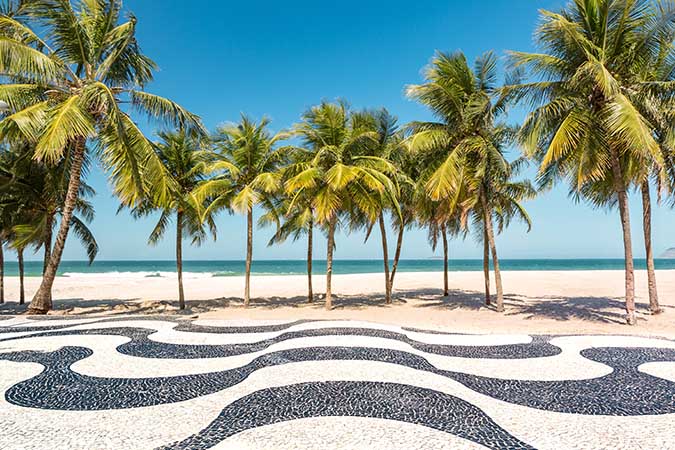
Copacabana is a legendary beach located in Rio de Janeiro. It’s one of the most beautiful beaches you’ll find in the world, but that doesn’t mean it's safe. While there are animals that aren’t so friendly, it’s the people you need to look out for. Crime is so common that officials have pretty much given up and just tell tourists, “don’t bring valuables with you.”
Honestly, who brings valuables to the beach to get lost? If you’re lucky, a purse thief or pickpocket will steal your valuables – yes, that’s the best-case scenario. It isn’t totally uncommon for a shootout to occur on the beach either. It’s a little hard to tan with a full Kevlar vest on.
Fraser Island, Australia
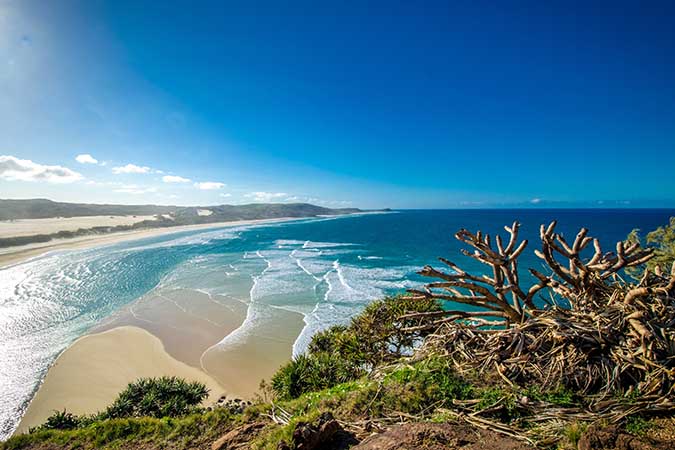
Poor Australia, it just can't catch a break when it comes to dangerous beaches. Honestly, we’d say avoid all the beaches, but this is one of the worst. At Fraser Island, you're likely to find Irukandji – one of the most venomous species of jellyfish known to man. You really want to avoid these guys at all costs.
At best, their sting will cause symptoms like pain, vomiting, and sweating. At worst they can lead to cardiac arrest. There are also great white sharks and poisonous stingrays you’ll probably want to avoid. Land isn’t much better. There are also large packs of dingoes roaming the beach. Did we forget to mention them?
Uttakleiv Beach, Norway

Norway attracts tourists like no other, especially if they love hot springs. All year round, people visit the Nordvest-Spitsbergen National Park to swim in the warm thermo-spring That being said, not all of the beaches are worth swimming in. Uttakleiv is completely the opposite. Taking a single step into the waters could give your body shock.
We mean that quite literally. The warmest these waters get is around 50 degrees Fahrenheit, and that’s in the summer. The waters are considered to be lethal to humans, so avoid them at all costs. You know, unless you want to catch a gnarly case of hypothermia. If that’s your thing, then…well…you do you.
Cape Tribulation, Australia
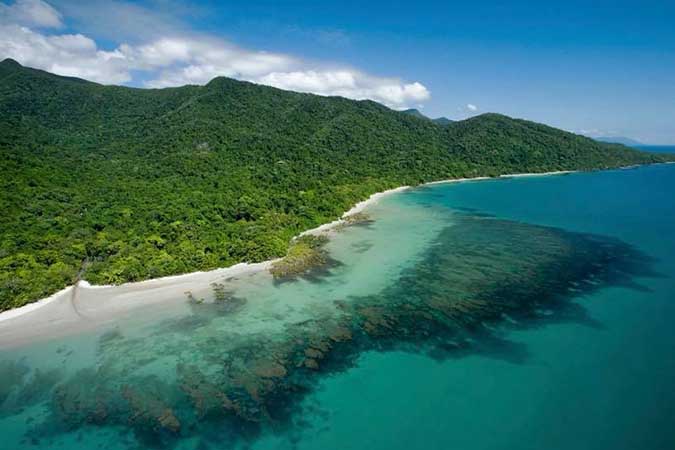
If the name is any indicator, Cape Tribulation is a trying place. While the stereotype about Australia being home to all sorts of terrifying and dangerous creatures isn't true all over the continent, it most definitely is at this beach. Honestly, if you come across an animal in Australia, it’s probably best to assume that it’ll hurt you.
This spot, in particular, is the stomping ground for cassowaries – an aggressive species of flightless bird that can weigh up to 160 pounds! They kind of look like a colorful ostrich (and it’s only slightly smaller than one). It's best to leave them to their own devices and take your chances with the jellyfish and venomous snakes that also call Cape Tribulation home.
North Sentinel Island Beach, India
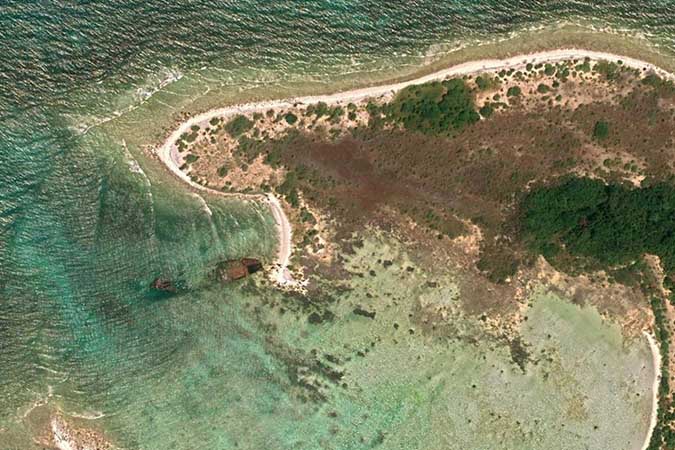
Chances are you'll never actually be on North Sentinel Island. The world has very few forbidden islands, but this is one of the biggest. People on the island are untouched by the modern world and supposedly know nothing about the outside world and technology. We hear you ask, “how is this possible?”
The answer is quite simple. Violence. If anyone lands on the island, the tribe will get violent and start attacking them. They have simple wishes: don’t mess with us. If you don’t listen, well, then they won’t respect your wishes of keeping your body in one piece. For this reason, entry is prohibited for everyone.
Bikini Atoll, Marshall Islands
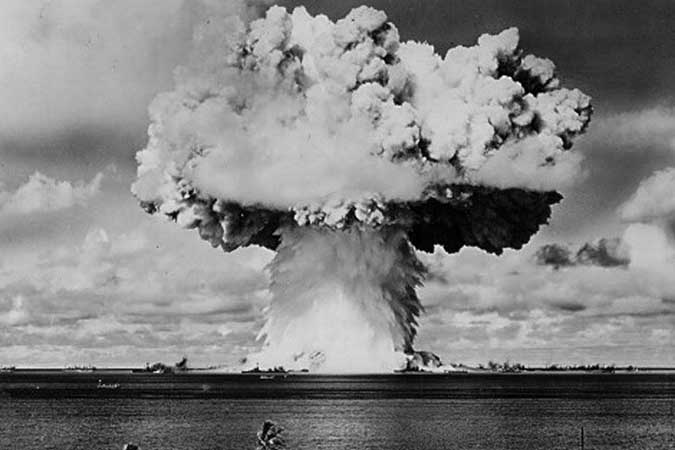
While the island of Bikini Atoll looks stunning and hyper-inviting, we also know that looks can be deceiving. In the 1940s and '50s, the United States government used this spot as a place to test nuclear weapons. That means the ground has tons of radiation drilled down pretty far and could be dangerous to your health.
Today, visiting Bikini Atoll is considered generally safe but eating food that is grown on the island is discouraged, as it could still be contaminated. Overall, it’s probably best to avoid this former nuclear site. US officials have been wrong about “safe” irradiated spots in the past, so we’re erring on the side of caution.
Staithes Beach, UK
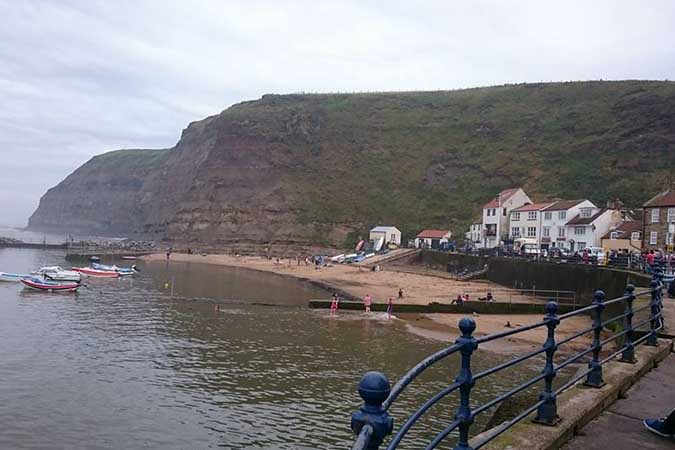
You won't find any dangerous sea creatures waiting to take off your leg at Staithes Beach. That being said, you might still lose a limb from a gnarly bacterial infection! Sure, it looks photographic, but the bacteria and viruses are naked to the human eye. With something like this, you’d think it would be taken care of, but nope!
Thanks to the sewage that runs into the ocean here, it's known as one of the most polluted beaches in Europe. The microscopic nasties lurking in the water here include meningitis and E. coli! Every year, the European Union does a test to make sure beaches are safe, and this one consistently fails to reach the minimum standards.
Chowpatty Beach, India
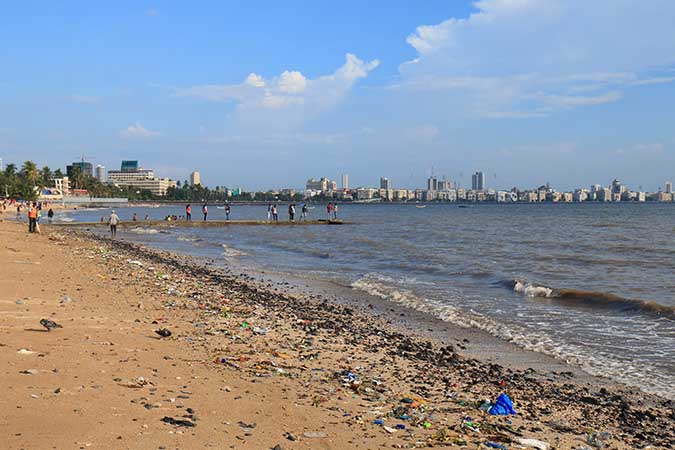
Unlike many of the other beaches on this list, you won't find any unbeatable views or blue waters at Chowpatty Beach in India. You’ll find quite the opposite. It's home to some of the most polluted water in the world. If you're looking for a swim, look elsewhere, because no one should step foot in this water.
The beach itself looks more like a massive trash heap than anything else. Seagulls flock there and are known for being pretty aggressive. Chowpatty is constantly cleaned, but it doesn't do any good. Some experienced tourists say the beach is sometimes clean enough to visit, but that’s a chance no one should take.
Dumas Beach, India
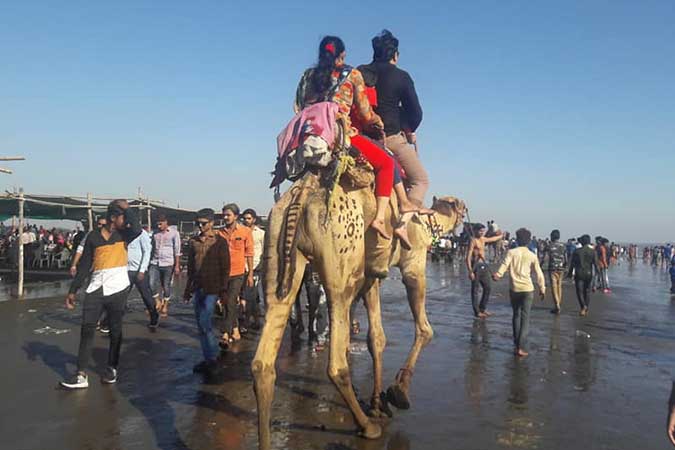
The main threat at Dumas Beach in India is the king cobras. As if that wasn’t enough to keep tourists from steering clear, the beach is also one of the most haunted beaches in the world. Folklore claims that it was once used as a Hindu burial site. The black sands only add to the creepy stories that plague this beach.
The bodies are said to cause the black sands, and there have been plenty of stories of supernatural occurrences. Of course, they're unproven and unverified, meaning that if you wanna visit, bring your EVP device. Maybe you’ll catch the first occurrence of ghostly chatting. Apparently, ghosts even like sunbathing!
Red Triangle, California

The Red Triangle isn't a beach per se, but rather, it's a stretch of coastline in northern California. Why is it called the “Red Triangle?” Well, that’s actually why it’s on this list! It gained this nickname because of all the blood in the water. See, great white sharks love this beach more than many other on this list.
A total of 11% of all great white shark attacks happen on this stretch of ocean. The reality is that there are great white sharks all along the coast, but let’s not tempt fate here. There’s been more than five dozen shark attacks along the Red Triangle, which is higher than any other place in the world.
Cable Beach, Australia

Some travel guides will say that Cable Beach is known for its unique futuristic landscapes. Yeah, it has one of the best sunsets in the world, but locals know it for what it really is: a death trap. It somehow attracts some of the scariest animals the country has to offer – and that’s quite the roster!
You’ve got poisonous snakes and spiders on the beach, while the water is home to pointer sharks, box jellyfish, and the occasional saltwater crocodile. It's like a petting zoo from hell. Even if you could look past all this, the currents are nothing to play with. The lifeguards have their hands full.
Tamarama Beach, Australia

Oh, hey! Australia? Now that’s a surprising thing on the list. Okay, we really hope you’re catching our sarcasm because we’re dripping with it. At this rate, it’s probably best to avoid all Australian beaches that aren’t explicitly called "Safe Cove." This one is a little unique compared to the others.
Unlike Fraser or Cable Beach, these waters aren’t infested with sharks. They are, however, infested with strong currents that will take you right away from the beach. More rescues are performed on Tamarama beach than any other place in Sydney. It doesn't matter whether or not you're a strong swimmer; this place screams "danger."
Darwin, Australia

On the island of Darwin in Australia, it's survival of the fittest. Did you get what we did there? Before we get started, let me assure you that you are definitely not the fittest when you visit here. Darwin has a habit of showing you that humans aren’t truly at the top of the food chain.
Darwin is home to crocodiles roaming the shore, looking for something good to nom on. Then, the waters are infested with sharks year-round. For some, it wasn’t the sharks taking their legs off, it was the box jellyfish sending their body into shock. There isn’t a single creature on the island that sees you as a friend.
Mindanao Island, Philippines
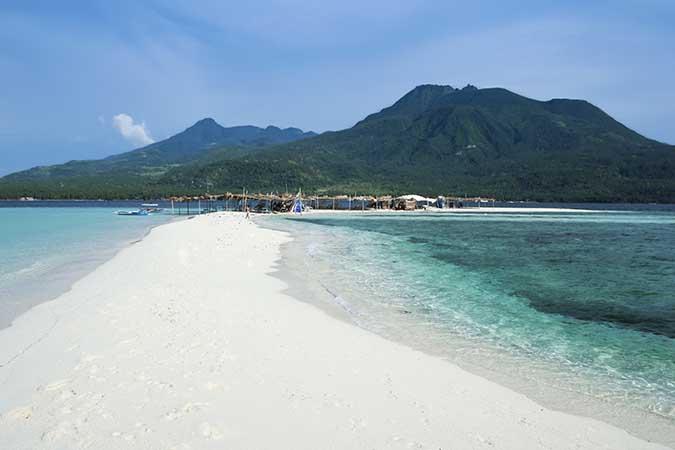
Mindanao Island is another spot where there's nothing wrong with the environment – it's a gorgeous beach. However, it's also a site of conflict between the Philippine government and Muslim rebels, which means it should probably be avoided if you can manage. Travel guides even state that the beach has a risk of “terrorist attacks.”
In addition to that, kidnappings occur regularly in the area. Is it called kidnapping if its an adult? Adult-napping also occurs. Most travel guides call this whole area far south as no-go zone because of how dangerous it is. Basically, unless you want to risk your life, don’t go anywhere near here.
Amazon Beaches, South America
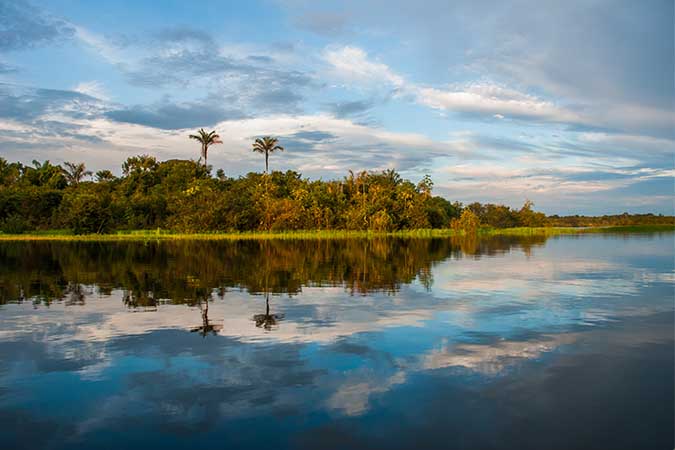
The Amazon River is big enough that it's got its own beaches, which you should probably avoid. Between the piranhas, electric eels, and anacondas that roam these waters, it's not worth the effort. The worst part is that these are the scary villains you can see. Some of the worst offenders are the ones that are so small, you barely catch ‘em!
The Amazon River also has strong currents that will pull you down to drown. On top of that, the parasites will find their way into your body and multiply like a bad attitude. It isn’t safe to drink, swim, or even go near! The mosquitos near the water – and swarming all over the place, to be honest – carry disease and could give you a serious infection, too.
Reunion Island, Indian Ocean

The only things being reunited on Reunion Island are you and your fear of sharks. With 20 attacks and eleven deaths since 2011, it's one of the more shark-infested places in the world. Between 1998 and 2016, there were more than 50 attacks recorded. We’re throwing a lot of numbers at you, but know this beach means bad.
Because officials are tired of dealing with people not heeding their warnings, swimming, water sports, and any activity in the water is explicitly forbidden within a perimeter of 300 meters around Reunion Island Coastlines. Why so many sharks? The island sits smack-dab in the middle of the “shark highway” between Australia and South Africa.
Schitovaya Bukhta, Russia

This one is especially sad because Schitovaya Bukhta has some of the best surfing waves in the whole world. Naturally, it’s a hotspot for the beach, but only for those that care very little for their health. On the other side of the peninsula is Vladivostock, home to the Russian navy and where Russia keeps its decommissioned nuclear submarines!
There are also reports that there are storage units that are leaking radioactive material into the water through underground cracks. No one really knows much about this area because the Russian government is so secretive, but it’s obvious that something suspicious went on here. Unless you want to end up with cancer, find another beach.
Lamu Island Beach, Kenya

The pristine beaches of Lamu Island in Kenya would be the perfect place for a sunny getaway...if it weren't for violent conflict in nearby Somalia. In 2011, there were two separate kidnapping attacks from Somalian pirates. Then, in 2014, a terrorist attack was carried out on the mainland of Lamu county.
We bring all this up because, at this point, these kinds of things are just a normal Tuesday. Okay, maybe that’s an exaggeration, but you get the point. These beaches aren’t worth dealing with the armed convoy of pirates and terrorist groups that patrol the area. The crowded areas suck, but dying would suck a lot more.
West End Beach, Bahamas
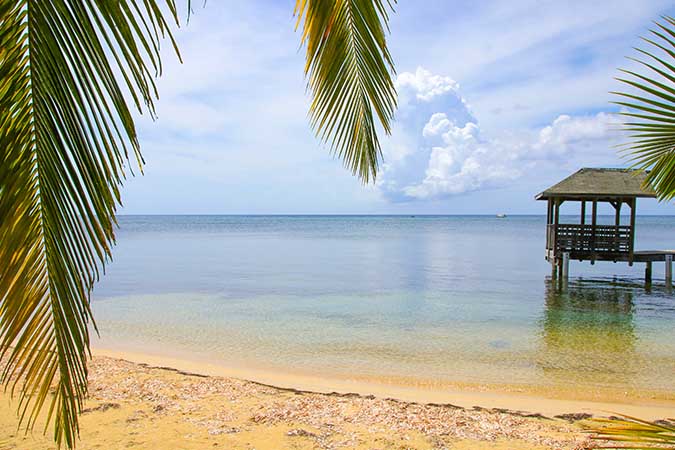
You probably won't find many great white sharks at West End Beach in the Bahamas, but you're likely to run into their equally terrifying cousin, the tiger shark. Tiger sharks are the species most likely to attack a human unprovoked, making it one of the most dangerous sharks in the world.
Tiger sharks have teeth that are specifically designed to shred their food – meaning your arm, leg, or whatever they happen to grab. West End also has its own climate, so thunderstorms can pop up out of nowhere. Entire boats have been overturned by a freak storm that turned a sunny day into a deadly afternoon.
Costa del Sol, Spain

Costa del Sol is a beautiful Spanish beach that draws tourists from all over Europe annually. Most of the time, the tourists enjoy their stay, but that has been changing drastically over the years. Marbella has spiraled into an area of gang crime and thefts. At this point, it’s out of control and dangerous for anyone.
Then, when we get to the beach, it seems like even nature is out to get you. The weather can turn on a dime and have dangerously high winds. Then, the ocean has such a massive undertow that even experienced swimmers have a hard time surviving. Still, people don’t think twice about going here. Weird, right?
Shenzhen, China
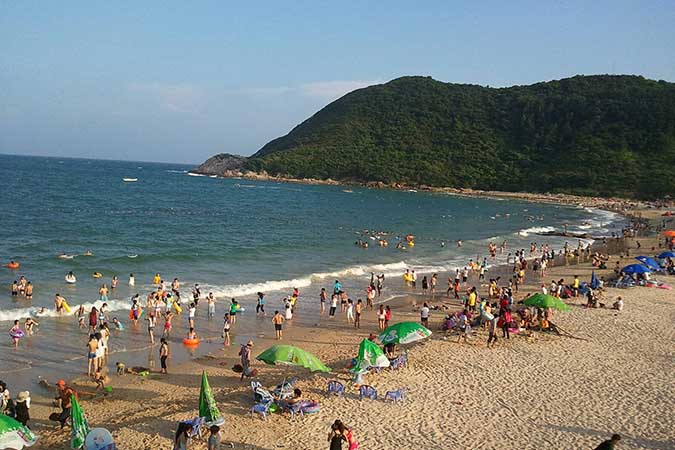
Shenzhen Beach is one of the most popular beaches in China – so much so that it becomes dangerously overcrowded. This has led to numerous deaths of small children who have drowned while swimming here. Stories like this aren’t rare and are almost commonplace for those who visit the island. It’s sad but true.
Crime also occurs on the island, but it’s mainly a hot spot for pickpockets thanks to the overcrowding. Violent crime is rare, but that doesn’t mean it never occurs. The worst danger is clearly too many people. Herald Weekly claimed it’s the number one cause of death in children between 1-14 in China.
Heard Island Beach, Australia
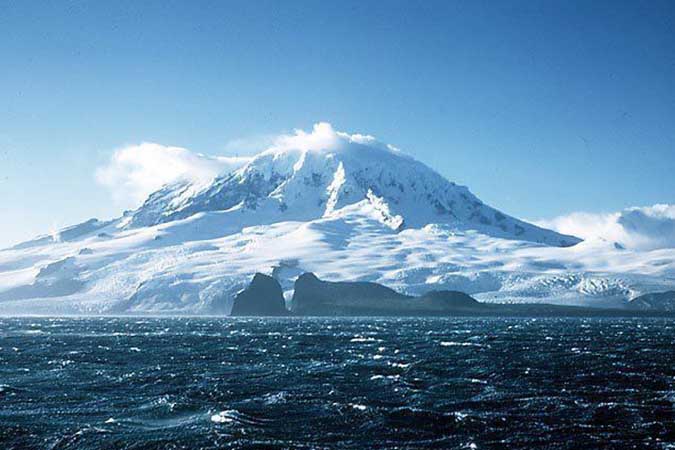
Heard Island is a part of Australia, but it’s unlike any other Australian beach you’ll ever see. You won't find many poisonous or otherwise dangerous animals here. Instead, it's the temperature that will get you. Don’t worry – we thought Australia was all hot desert too, but apparently some places are pretty darn cold.
While it's technically a portion of the land down under, it's actually closer to Antarctica. This means that the water temperatures are deadly pretty much all year round. It isn't like you could swim here even if you wanted to. Heard Island is forbidden to keep it free of animal pests.
 Author
Jennifer Freehill
Last Updated: June 06, 2024
Author
Jennifer Freehill
Last Updated: June 06, 2024
